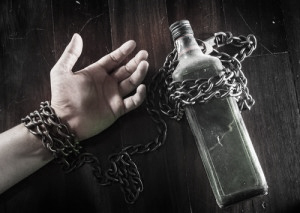 Nearly every adult has tried alcohol at some point, and millions drink on a semi-regular basis. You’d be hard-pressed to find someone that didn’t drink any alcohol at all (except for those with religious reasons not to do so.) Because alcohol use is so widespread, it can be hard to spot when someone needs help for alcohol addiction. Much more than many other forms of addiction, an alcoholic can have a chameleon-like ability to blend in.
Nearly every adult has tried alcohol at some point, and millions drink on a semi-regular basis. You’d be hard-pressed to find someone that didn’t drink any alcohol at all (except for those with religious reasons not to do so.) Because alcohol use is so widespread, it can be hard to spot when someone needs help for alcohol addiction. Much more than many other forms of addiction, an alcoholic can have a chameleon-like ability to blend in.
If you or someone you know appears to be drinking too much, there are several steps you can take to begin alcohol recovery.
1. Lowering your alcohol intake
You don’t have to wait to start doing something effective about alcohol use. The very first step you can take is to simply lower the amount of alcohol being used. If you’re concerned that you are drinking too much, simply get rid of any beer or wine you have sitting around (or give it away to non-alcoholic friends) and try to go without. If you find that you have no problem not drinking for a while, then you’re probably not an addict.
If you do feel strong urges to drink and find yourself going out to buy more, you may have a problem that needs professional help.
2. Participating in activities where drinking is not involved
Another way to limit the effect of alcohol on your life (before its use has really hit the addiction stage) is to simply start participating in activities where drinking is not involved. The other side of the coin is to stop participating in activities where drinking will be expected or required.
This means that you should stop going to bars or to the comedy club that has a two drink minimum purchase. Get outdoors and participate in sports or hiking instead. You’ll find that you’re not around drinkers quite as much, and you’re getting health-boosting exercise as well.
3. Researching rehab centers
If alcohol use has progressed to the stage of actual addiction, it’s time to start researching rehab centers. You want to find a rehab that is going to treat you or your loved one with individualized care and attention. You also want to make sure that your rehab is a completely drug-free one. Rehabs that use drugs to “manage” your addiction aren’t effective at actually detoxifying your body and getting you off of drugs completely.
4. Staging an intervention
Getting help for a loved one is a bit trickier than getting help for yourself. If you’ve already made the decision to seek rehab, you can simply arrive and get started. If it’s someone else that needs help, they may need to be convinced. Once you have done the research on what rehab is your best option, you may need to sit your loved one down and have an intervention.
Research how to have a successful intervention and follow the guidelines closely. You want it to be a success so that your family member or friend actually gets started.
5. Starting rehab
The last (and most important) step is to arrive. This can actually take more courage than any other step because it’s the one where you have to actually commit yourself to making a major life change. Many addicts never make it this far, so you have the right to feel very proud of yourself or your loved one for beginning the process of rehab.
Going through rehab takes a lot of hard work, but if you stay strong and commit yourself to the process, you can save your own life or the life of someone you love.